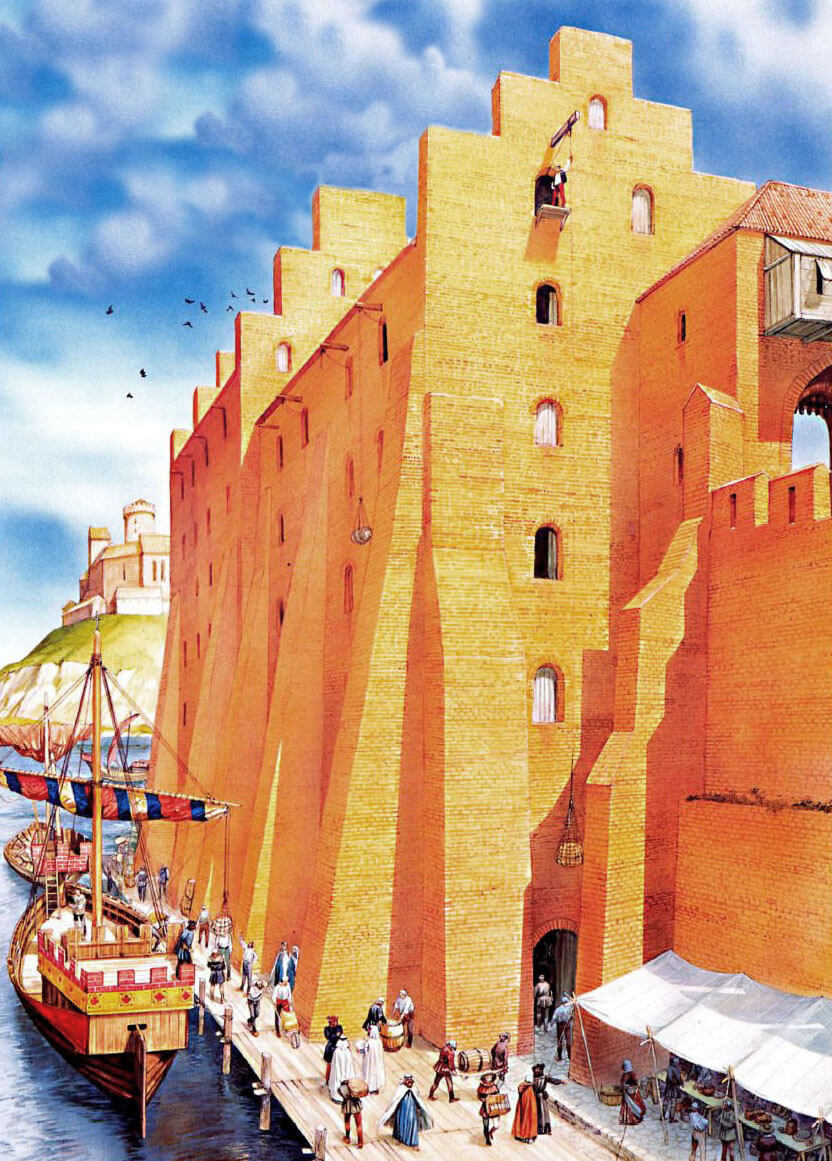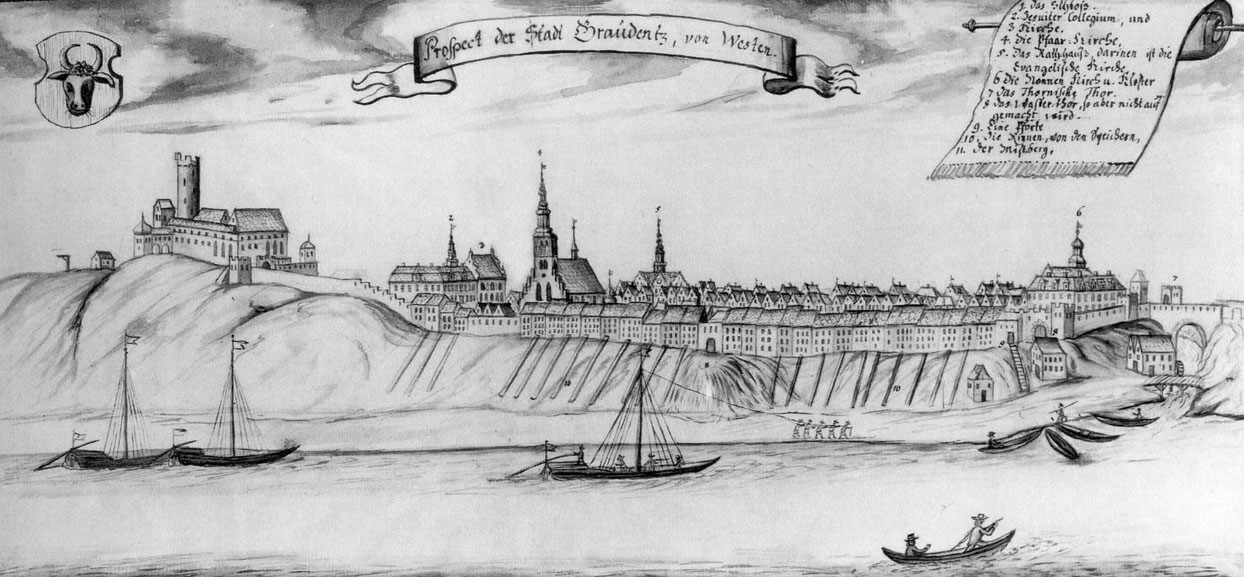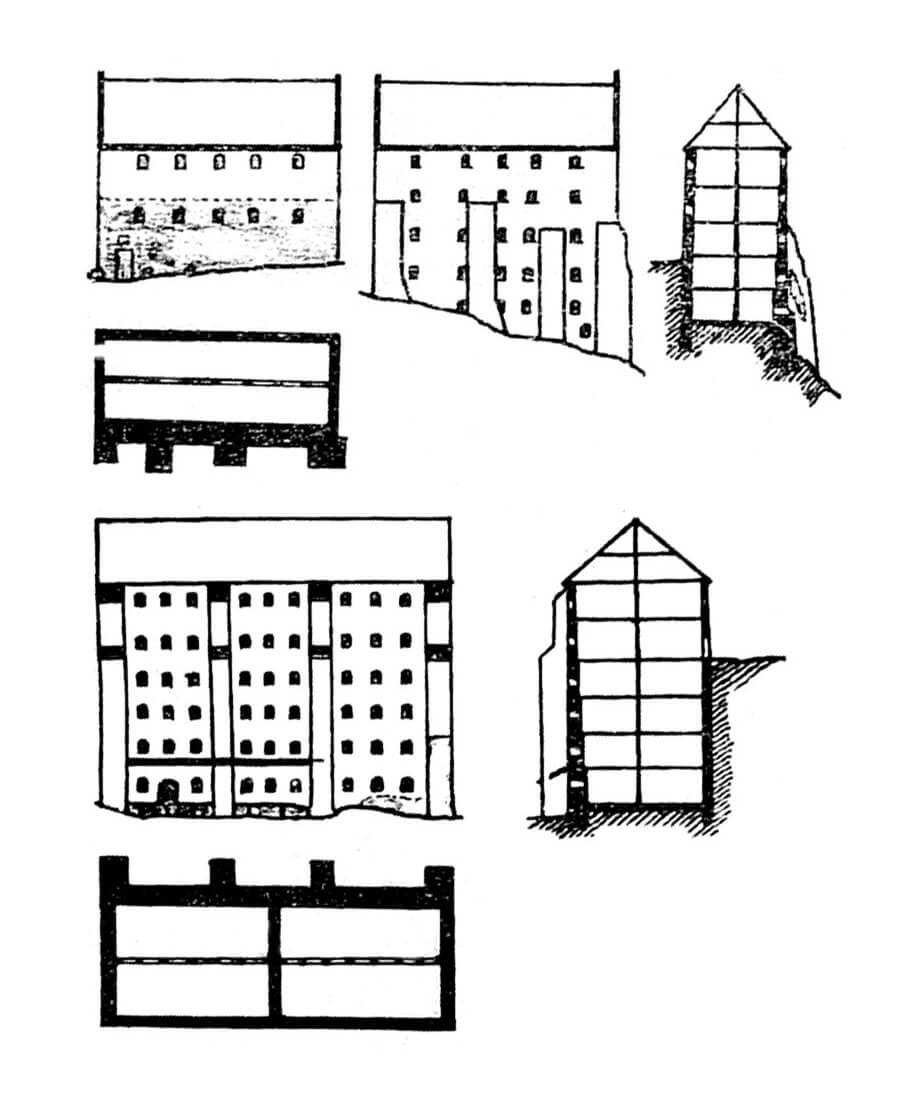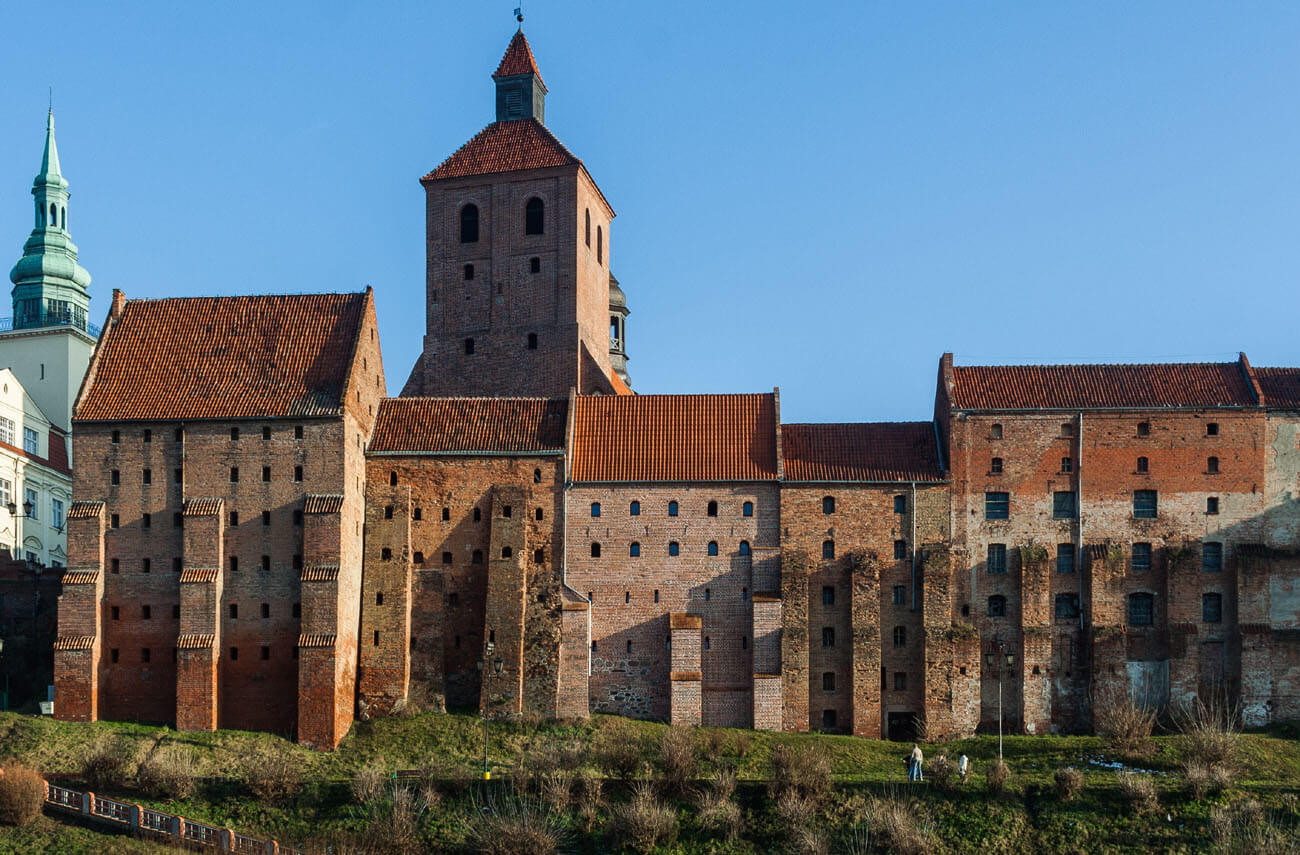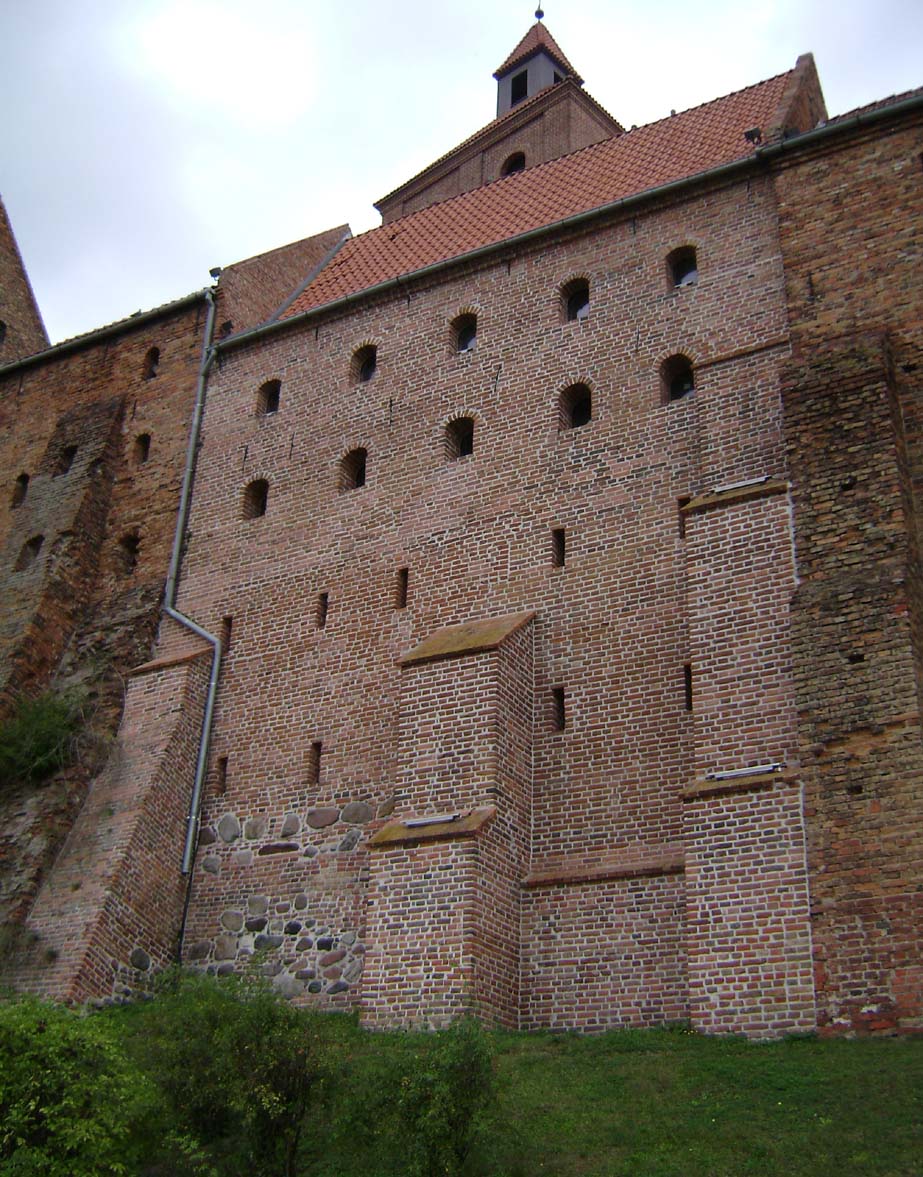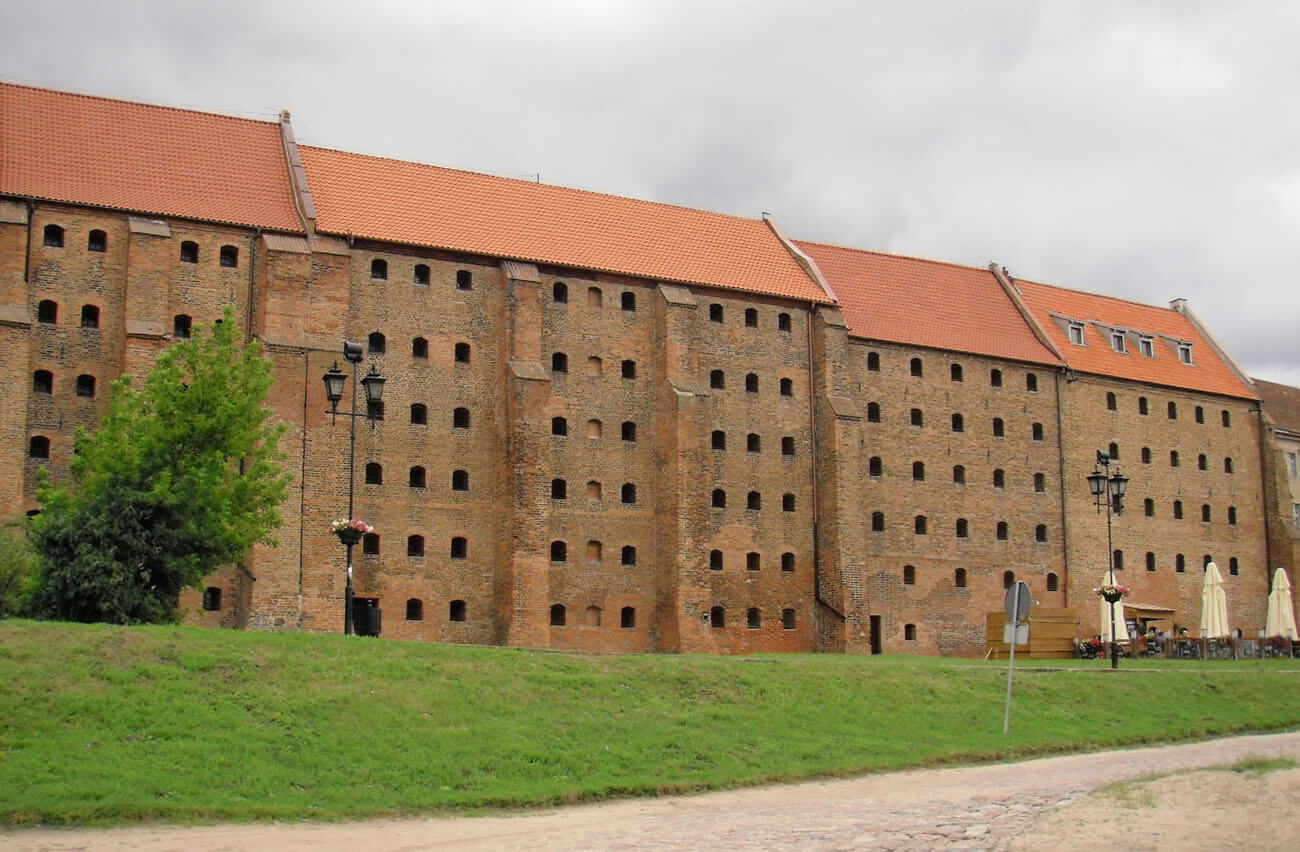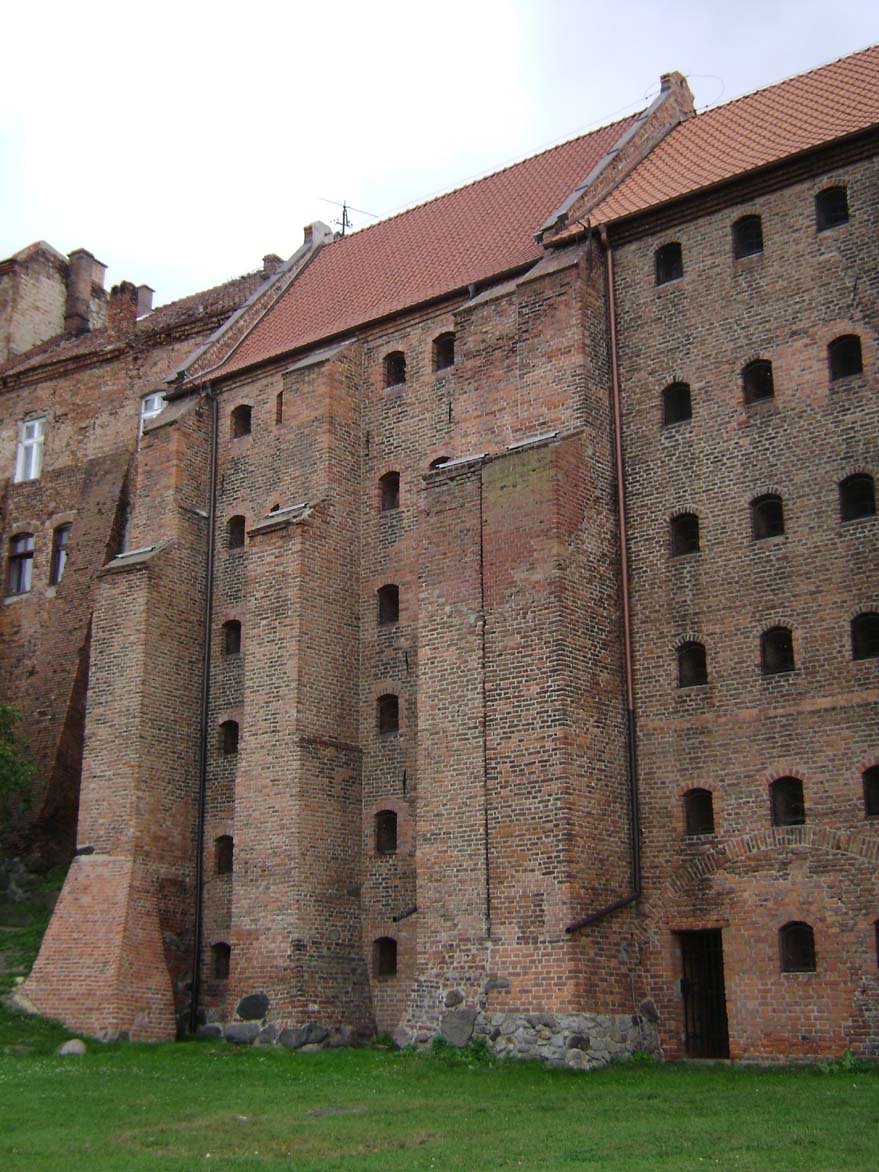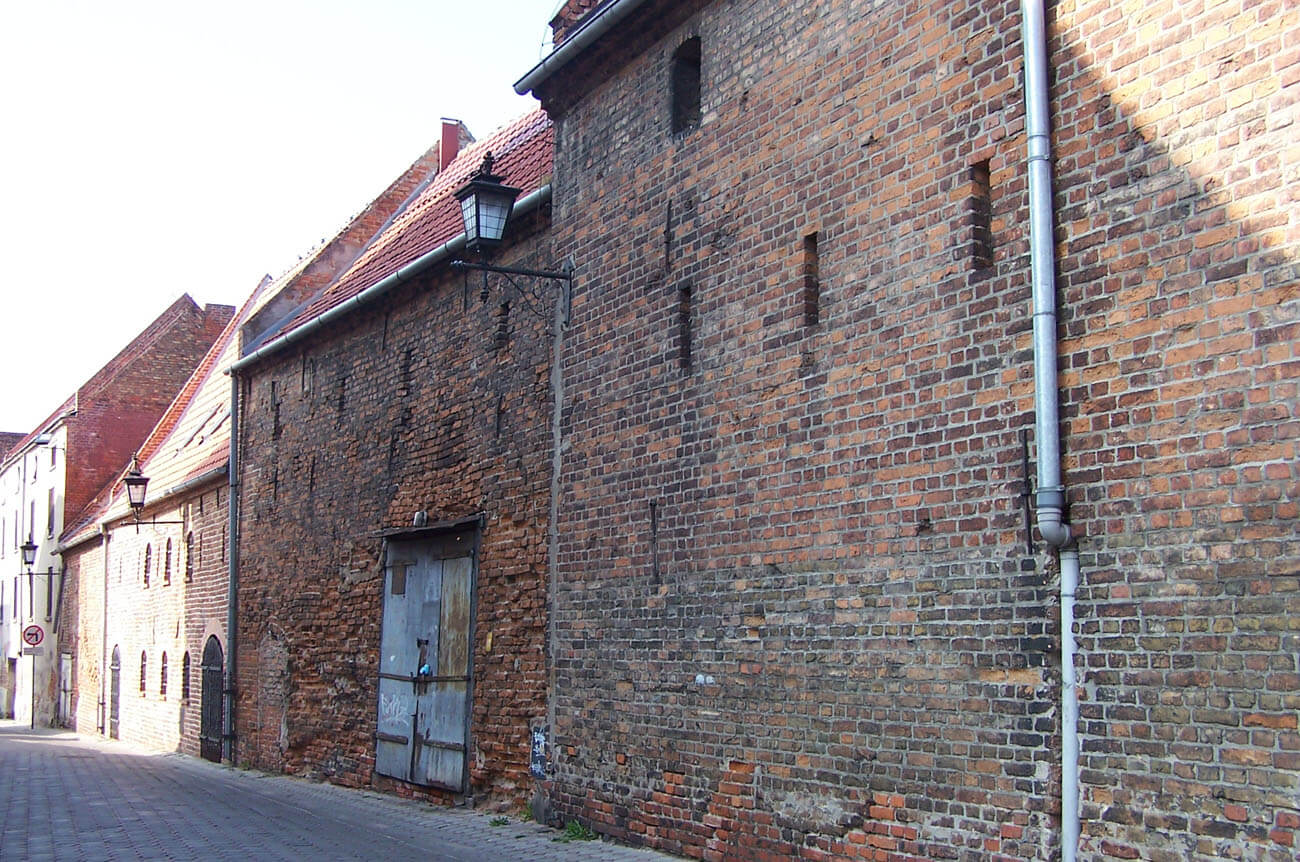History
At the beginning of the 14th century, Grudziądz entered a period of intensive development, receiving a number of economic privileges from the Teutonic Order (in 1291 in the act of establishing the town, in 1310, when Grand Master Charles of Trier assured the freedom to trade in cloth and clothing). Grudziądz also made great profits from the grain trade, acting as an intermediary in its purchase and sale thanks to a very favorable geographical location. When the construction of defensive walls began at the beginning of the fourteenth century, a single line of them was also found on a high escarpment from the side of the Vistula River. However, already before 1341, the first granary of the merchant Bornwald was built in their line. Then, during the reign of the Grudziądz commander Henry of Boventin, in the years 1346 – 1351, several more were built, which the town council put at the disposal of the townspeople. Probably by the end of the fourteenth century, the entire western part of the town was occupied on the river side. According to the first estate census from 1504, there were fourteen granaries in Grudziądz, most of which made of bricks.
In 1455, during the Thirteen Years’ War between the Teutonic Order and Poland, the crew from Kwidzyn under the command of Hans von Gleichen of Lochstaedt set fire to the Grudziądz suburb and granaries, taking 30 people prisoner on the Vistula. The town was not captured, and the reconstruction was probably carried out quickly, on exactly the same plots. Only in the first half of the 16th century, Grudziądz’s granaries could deteriorate when the trade on the Vistula temporarily ceased. It was raised by King Zygmunt August, from whose order in 1567 the customs house was moved from Włocławek to Grudziądz.
The rent register from 1608 recorded sixteen granaries and one empty plot in Grudziądz. The same situation occurred in 1617, during the period of the greatest trade turnover, which in 1624 peaked at 24,000 fines. During the 17th century, the number of merchants began to grow, which meant that plots of land with granaries were divided into parts. In 1656, there were already 21 of them, some of which were destroyed by the Swedes setting up their cannons, and some by fire caused by shelling during the recapture of the town in 1659. In the next two centuries, along with the decline of the grain trade, more and more granaries were either destroyed or rebuilt into apartment houses. The fire in 1906, and especially the fighting in 1945, caused serious damages.
Architecture
The location of the granaries in Grudziądz was due to the proximity of the river port at the foot of the slope falling towards the Vistula, the bed of which in the Middle Ages ran in the immediate vicinity of the town. Initially, the western, riverside part of Grudziądz was limited by a defensive wall, which, however, due to favorable terrain conditions, did not require fortification with towers or high curtains. It was there, in the area slightly rising to the Teutonic Knights castle, that from the fourteenth century, granaries were built, mostly made of bricks, which testified to the significant role of Grudziądz in river trade.
All the granaries in Grudziądz were placed ridge to ridge, i.e. in such a way that they did not have gables facing the town or the river. Their thick walls constituted a barrier over 20-25 meters high. A characteristic feature of the buildings was the multi-storey form from the side of the Vistula River and the single-storey from the town side, the difference that the sharp drop in the terrain made. Another distinguishing feature were the buttresses from the river side and smooth walls facing Spichrzowa Street. This street, initially a typical underwall street, ran along the entire length of the town, connecting all the granaries with the transverse streets leading deep into the town towards the market square. From the south, the extreme granary was adjacent to the Water Gate, and to the north – to the Castle Gate.
The buttresses of the granaries were massive, high, and stepped. They were arranged inconsistently, due to the continuous addition of new supports for high walls. Only the granary at the Water Gate stood out, which was the only one originally without buttresses. Its location was the most convenient for reloading, as it was located closest to the Vistula and at the lowest height. The dimensions of its bricks, arranged in a Flemish bond, would indicate that it was one of the oldest granaries, perhaps known from records Bornwald Granary. It had a western wall with a thickness of 1.9 meters, and at least five storeys, each about 2-25 meters high. The first three formed a basement from the town side, and the other two – the ground floor and the first floor.
The neighboring plot (No. 13/15) was developed with a granary in the 40s of the 14th century. It was reinforced with buttresses already at the time of construction, and was similarly divided into four basement floors, the ground floor and the first floor. The individual storeys, as in other granaries, were separated by timber ceilings. They were illuminated with small openings, which, if necessary, could serve as loop holes or arrowslits. On the lower storeys, these were slit openings, while the higher openings were topped with segmental arches.
The Grudziądz granaries were connected with the quay by timber downpipes, through which grain was dumped directly onto boats and ships. The downpipes could be supported on trestles or lay on the slope of the hill, or it were fastened to the wall of a buttress. From the town side, techniques known from seaside granaries or granaries situated on flat terrain were used – gear pulley similar to cranes. Inside, there could be elevators with ropes that passed through openings in the ceilings, and the grain bags were also carried by hand, which was facilitated by the small number of floors from the town street.
Current state
The complex of granaries forming the town’s panorama from the side of the Vistula River is today a unique monument, not only in Poland. Unfortunately, some of them were rebuilt in the Baroque period, some were transformed into residential houses, and the granaries suffered serious damage during the battle for the town in 1945, so many of them had to be rebuilt in the years 1946 – 1966. Currently, some of them are still used as warehouses, partly residential, a few are adapted to the needs of the Museum of Grudziądz. All of them are undoubtedly a symbol of the town. The best-preserved and oldest Gothic granaries are located in the vicinity of the Water Gate, currently at No. 9/11 (probably Bornwald’s Granary), the Gothic form has largely the adjacent granary No. 13/15, and further granary No. 53 from the second half of the 14th century (up to the height of the first floor).
bibliography:
Atlas historyczny miast polskich. Tom I Prusy Królewskie i Warmia, red. A.Czacharowski, zeszyt 4 Grudziądz, Toruń 1997.
Die Bau- und Kunstdenkmäler der Provinz Westpreußen, der Kreis Graudenz, red. J.Heise, Danzig 1894.
Radacki Z., Spichlerze gotyckie nad dolną Wisłą, “Zeszyty Naukowe Uniwersytetu im. Adama Mickiewicza w Poznaniu”, nr 22, Historia Sztuki, zeszyt 1, Poznań 1959.
Turnbull S., Crusader Castles Of The Teutonic Knights. The Stone Castles Of Latvia And Estonia 1185-1560, Oxford 2004.

